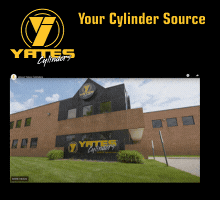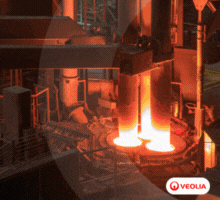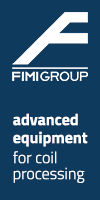QuinLogic Introduces Proactive Production Supervision System to Improve Operating Results
07/22/2013 - Processes in the steel industry have become so complex that it is no longer possible to permanently observe every single measured value. The new PPS (Proactive Production Supervision) system from QuinLogic solves this problem by monitoring production along the complete process route based on rules defined for the various products.
In the event of deviations from the specified quality, the new PPS Proactive Production Supervision system from QuinLogic makes it possible to instantly — during running production — take quality decisions and intervene in the production process by appropriate corrective action. In several steelmaking plants, first experience has proved that PPS leads to a significant quality improvement of the final product.
Processes in the steel industry have become so complex that it is no longer possible to permanently observe every single measured value — neither within individual process steps nor along the complete production chain from continuous casting through to the finished coil.
The new PPS (Proactive Production Supervision) system solves this problem by monitoring production along the complete process route based on rules defined for the various products. It triggers an alarm as soon as one or several rules are not complied with, for example, when during galvanizing or annealing the temperature curve is not as specified or when unexpected incidents have a negative impact on the production. In doing so, the system uses data which in the past have only been latently present in the process control data bases and which due to the immense quantities of measured data have been largely unnoticed.
Friedrich Lücking, managing director technology of QuinLogic, explains the new approach: “The system intervenes in the production process at a very early stage. This is why we call it “proactive.” For example, if a process is about to go off course due to an accidently falsely set valve, it can be immediately corrected by PPS. This prevents the successive production of several out-of spec coils, having an immediate positive effect on the operating result.”
Pictured below: PPS displays the complete production chain in various sectors, all of which are relevant for the assessment of the product quality.

Transparency across several process stages
PPS maps the entire production chain by subdividing it into several sectors that are relevant for the assessment of the quality. In case of a hot-dip galvanizing line, there are typically five sectors from the pay-off reel through to the recoiler. Rules are defined for each sector, for example, the maximum allowable deviations from speed curves, temperature profiles or a specified number of surface defects per unit of area.
The rules can be modified at any time. This requires no special IT knowledge. The procedure is highly user-friendly. For example, the limits between “OK” and “blocked” are set by means of virtual sliding buttons.
For each strip in production, PPS captures the measured strip data that are already present in the process control system and analyzes these data according to the rules. For combining these data, QuinLogic uses its “MOM” Material Object Model, which has already proved highly useful for “QES” Quality Execution Systems in many works.
New form of communication between production and quality assurance
The quality assurance personnel no longer check individual measured values but see a clearly structured graphical display showing all coils in the various sectors in the colours green, yellow or red according to their quality condition. They will only intervene when a rule is violated, for example, by discussing the issue with their colleagues from production who will then eliminate the cause of the problem. Through this approach, PPS provides the basis for a new form of close collaboration between production and quality assurance.
First users of PPS have confirmed that the software leads to a marked improvement in the quality of how the two departments cooperate. This is because all persons involved see the same data and because the quality decisions are underpinned by facts.
PPS also analyzes historical data and brings to the surface relationships between various process steps which in the past were not easily visible.
Pictured below: The display at the top of the screen indicates which coils in which process sectors will have to be checked (yellow) or which oils are already in critical quality condition (red).

Pictured below: The thresholds for the individual rules can be easily and at any time changed via virtual sliders.
Since 2008, QuinLogic has specialized in the development of easy-to-use software modules that support industrial quality assurance departments in managing their highly complex tasks. For a quality management approach that takes into account all stages and processes of the production route, it is necessary to exploit large quantities of measured data of most different kinds in order to enable significant efficiency increases in production. The team of QuinLogic engineers can build on many years of experience in the fields of software development, data acquisition, surface quality and yield optimization in the steel and aluminium industries.
In the development of new product solutions for the steel industry, the company has successfully cooperated with VDEh-Betriebsforschungsinstitut in Düsseldorf, Germany. QuinLogic is also one of the seven members of the “Quality Alliance” which have set themselves the objective of providing the metals industry with premium and innovative efficiency-increasing products.



.jpg?lang=en-US&ext=.jpg)
-(1).gif?width=220&height=200&mediaprotectionhash=8011a71ede637cd523c67b1296fc49e6151560fde821a46f29cc85998cc76615&ext=.gif)


